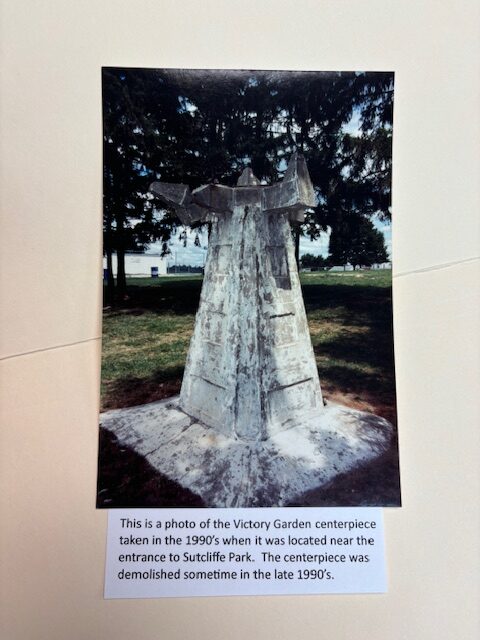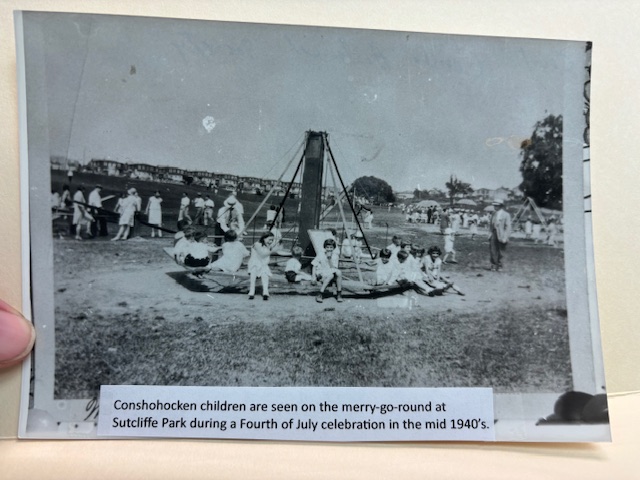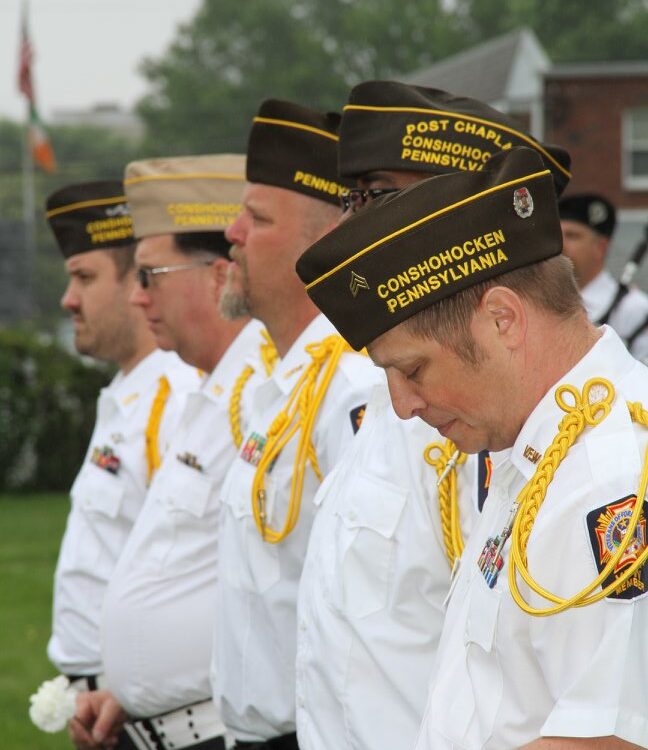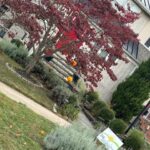
BK Tree and Landscaping Services
October 16, 2024
West Conshohocken Sesquicentennial – Beyond the Banquet
November 7, 2024What Are Those BIG White Rocks at Sutcliffe Park – and what are they doing there?
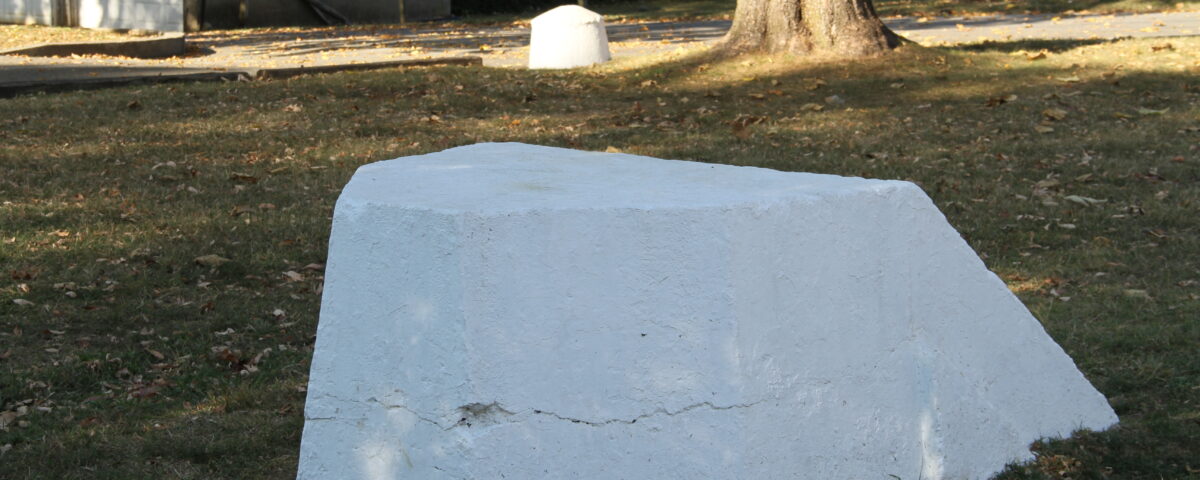
What are those big White Rocks at Sutcliffe Park
And What Are They Doing There?
By Jack Coll
10-22-24
For the many residents and visitors who visit Sutcliffe Park to walk the trail, use the first class playground facilities, or to play little league baseball among other things may have noticed the two large stones/rocks/or slabs of concrete, that are painted white located between the snack stand and what we call the major league little league baseball field. There are also three smaller stones along the driveway.

So, the question was posed to me, “What are they?” Well, I happen to have the answer to that question, I’m glad you asked, and here’s the story.
Shortly after December 1941, when America was forced to take part in World War ll, “Victory Gardens” were planted by families throughout the United States, (The Home Front) to help prevent a food shortage.
Planting Victory Gardens helped make sure there was enough food for our soldiers fighting around the world. These Victory Gardens, or food gardens helped out because canned vegetables were rationed during the war along with several other items like gas and sugar. Victory Gardens also helped people stretch their ration coupons meaning the amount of certain foods they were allowed to buy at the store.
The borough of Conshohocken jumped on board with a public Victory Garden that was located in Sutcliffe Park, and for good reason. In Conshohocken one out of every seven residents served in the military during World War ll, in West Conshohocken one out of every six residents had served during the war.
It’s interesting to note, that many different types of vegetables were grown such as tomatoes, carrots, lettuce, beets and peas. Victory Gardens were responsible for bringing Swiss chard and kohlrabi onto the American dinner tables because they were easy to grow. At their peak there were more than twenty million Victory Gardens planted across the United States.
By 1944, Victory Gardens were responsible for producing 40% of all vegetables grown in the United States. More than one million tons of vegetables were grown in Victory Gardens during the war.
Conshohocken’s Victory Garden was unique in a couple of different ways as they combined their Victory Garden with a Rock Garden and a playground all in the same area of the park.
Growing Victory Gardens gave Americans on the home front a feeling that they were doing something helpful to win the war. Many schools across the country planted Victory Gardens on their school grounds and used the produce in their school lunches.
In April 1942, a group of grade school students from the Hoffecker School, (currently Conshohocken Elementary School located at Third Avenue and Harry Street) planted a Victory Garden near the school grounds. The pupils under the direction of Miss Helen Murphy were learning through experience how to prepare and cultivate a vegetable garden.
Included in the group were Bob Smith, Ronald Beaver, Kenneth Smith, Josephine Germano, Marguerite Schultz, Wilda Kauffman, Elwood Moulder and Theresa Germano.
By 1944, approximately 75 gardens were planted in the Mary Jane Sutcliffe Victory Gardens, all of the vegetables grown were consumed at the dinner table or canned for use during the winter months.
By 1946 Victory Gardens began to fade as food became more accessible although many residents throughout the country continued their private gardens, few communities maintained public Victory Gardens.
In 1946, the Fenway Victory Gardens in Boston Massachusetts, and the Dowling Community Gardens in Minneapolis, Minnesota remained active as the last surviving public examples from World War ll. Still active in 1946, Conshohocken was one of the last public Victory Gardens in the country.
So, the answer to the question, “What are the white rocks or slabs of concrete at Sutcliffe Park and what are they doing there?” They are left-over remnants from a time of war that took place more than eight decades ago, and a reminder of Conshohocken’s participation during World War ll when Conshohocken’s Victory Garden was proudly on display.
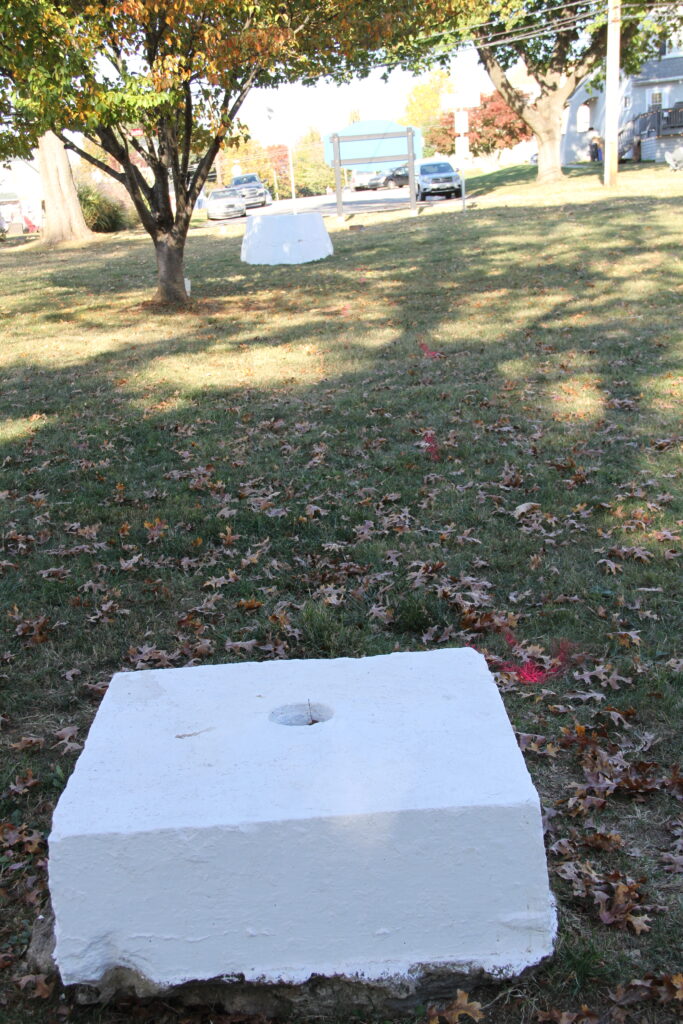
The Victory Gardens and Rock Garden was located in the park, perhaps between second base and center field of the main baseball field just below the playground. A number of pieces from the gardens were relocated where the current slabs are seen today. (I don’t know when they were relocated but they were visible into the 1990’s, when most of the remaining pieces of the garden were removed) I believe the main center piece was a fountain, as there were metal pipes visible as though they were hooked up to a water supply.
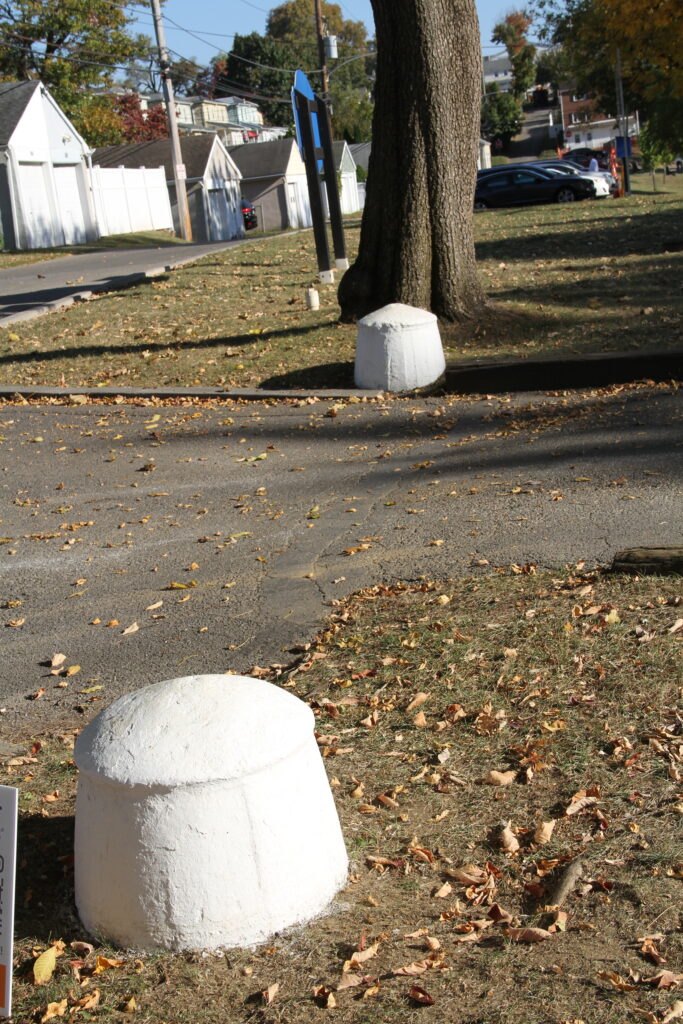
The painted white rocks or slabs at Sutcliffe Park have become a comforting place of rest for the seniors making their way to one of the distant ballfields, and a great two minute playground for youngsters who really don’t understand that the rocks aren’t really part of the playground as they climb-up and jump off the rocks.
Perhaps you’ll enjoy a few interesting war-time facts and information that your parents or grandparents enjoyed or endured during World War ll:
In 1941, a five foot Christmas Tree could be purchased for 75 cents.
On May 12, 1942, gas ration started in Conshohocken
1942
1942 Gasoline rationing goes into effect in the United States
The office of Civil Defense is established
The Manhattan Project begins
Kellogg’s Raisin Bran and instant coffee are introduced
President of the US was Franklin Roosevelt, I wonder how many residents remember or know who the Vice President was? Well, it was Henry Wallace. (I didn’t know that!)
Auto manufactures stopped producing cars to turn production to war materials, the next new car in the United States wasn’t made until 1945
A new house in Conshohocken cost about $3,775.00
The average income of a steel worker in 1942 was $1,885.00
A new car at Moore’s Chevy on Fayette Street was about $920.00 with gas being 15 cents per gallon.
A dozen eggs at the store was 20 cents, but if you purchased your eggs from a local farmer, you could get 13 eggs for 15 cents.
A little music along with a few of the movies from 1942:
Jersey Bounce by Benny Goodman
White Christmas by Bing Crosby
I’ve Got A Girl in Kalamazoo by Glen Miller
Sleepy Lagoon by Harry James
Remember Pearl Harbor by Sammy Kaye
Movies:
Mrs. Miniver
Casablanca
Bambi
To Be Or Not To Be
How about 1943:
Points of interest:
The sale of pre-sliced bread is banned to reduce bakeries demand for metal parts.
Singer Frank Sinatra debuts on radio’s “Your Hit Parade”
John F. Kennedy saves the crew of PT-109 after a Japanese destroyer splits the boat in two
Canned food and shoes are rationed in the United states
The American Broadcasting Company (ABC) is formed
The board game “Clue” was invented by a solicitor’s clerk named Anthony Pratt.
Ronnie Milsap, Bobby Fisher, Joe Namath, Billie Jean King and John Denver were all born in 1943
1944
A few points of interest:
The “Batman & Robin” comic strip premieres in newspapers.
Philadelphia is paralyzed by a transportation strike.
Thirty blocks in Cleveland, Ohio burn after a liquid gas factory explodes.
D-Day begins when allied troops make landings at Normandy, which leads to the recapture of Paris.
Fifteen-year-old Dutch-Jewish diarist Anne Frank and her family are discovered by the Nazis and taken to concentration camps.
Meat rationing is ended in the United States.
Chiquita bananas are introduced.
Because of the war, manpower shortage, the Cincinnati Reds used 15-year-old southpaw Joe Nuxhall for two-thirds of an inning in an 18-0 loss to St. Louis. He was the youngest player in Major League Baseball history.
Born in 1944, a couple of familiar names, Danny DeVito, George Lucas, Michael Douglas, Gary Busey and Diana Ross
1945
There was big news in 1945, The National Football League required all players to wear long stockings.
After destroying major cities in Germany, Hitler commits suicide.
World War ll comes to an end, May 8, in Europe, and August 14, in the Pacific, after involving 57 nations. 55 million people died.
The American Flag is raised over Iwo Jima.
Japanese Americans are permitted to return to the west coast.
United States Army General George S. Patton passes away.
Pete Gray, a one armed outfielder pressed into action because of the War manpower shortage, went 1-for-4 in his Major League debut with the St. Louis Browns.
Tuition to Harvard University was $420.00 per year
A postage stamp was three cents each
And there you have it, a peek into the country’s war years of the 1940’s, back when Victory Gardens were popping up throughout the country. Conshohocken remembers the war years, and the Victory Gardens. We have proof to that, it can be found at the entrance to Mary Jane Sutcliffe Park in the form of two, big rocks or slabs of concrete, painted all in white, a reminder of the gardens that once were part of the landscape of Sutcliffe Park.
And hey, who ever it was that asked me the question about the big white rocks, Thanks for the Memories

